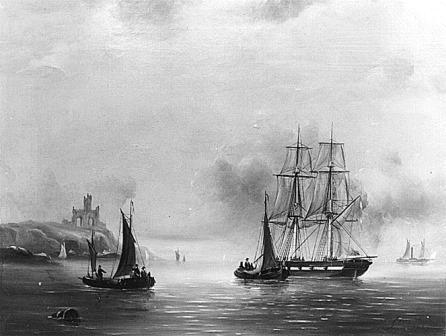Recommendation
In a letter dated 17 October 2008, the Minister for Education, Culture and Science (hereafter referred to as: ‘the Minister’) asked the Restitutions Committee (hereafter referred to as: ‘the Committee’) to issue a recommendation regarding an application from the Foundation L.d.H.D. (hereafter also referred to as: ‘applicant I’) and an application from the Foundation S.J.M.W. (hereafter also referred to as: ‘applicant II’) for the restitution of the painting Ships off the coast by G. van Emmerik. The claimed work of art is currently part of the National Art Collection under inventory number NK 3536 and on loan to the Dutch embassy in Prague.
